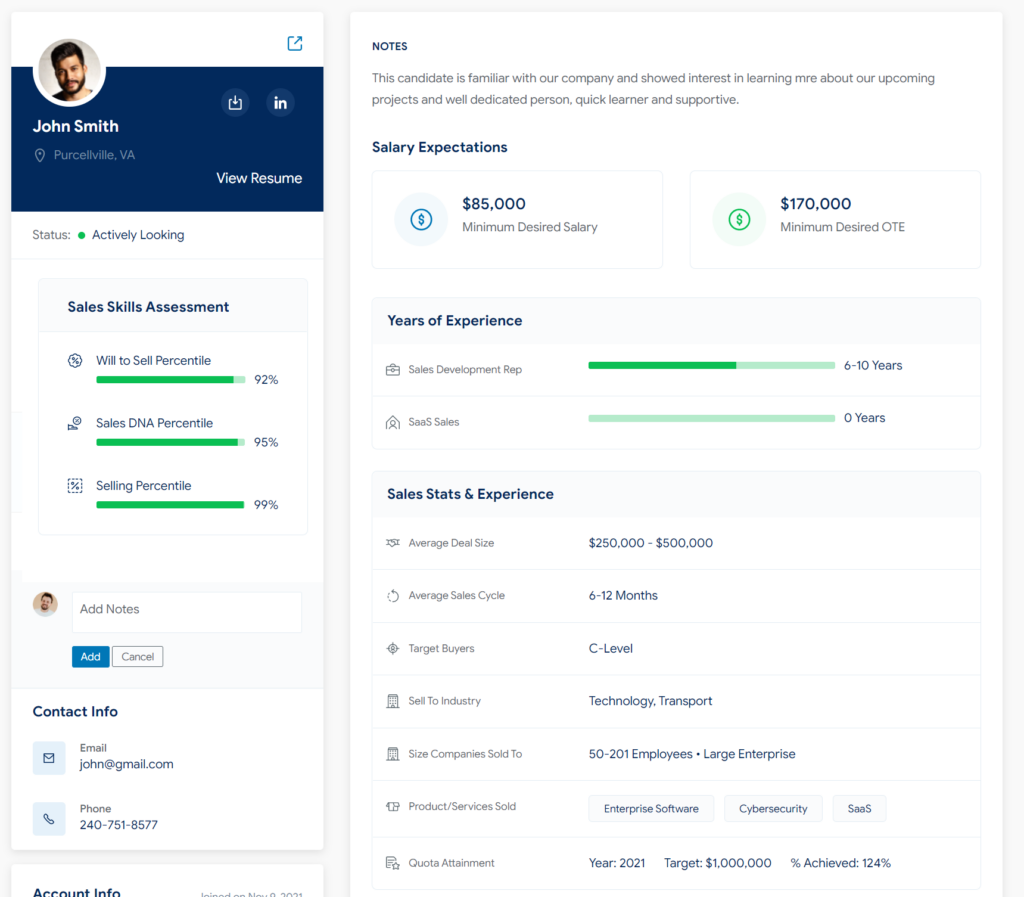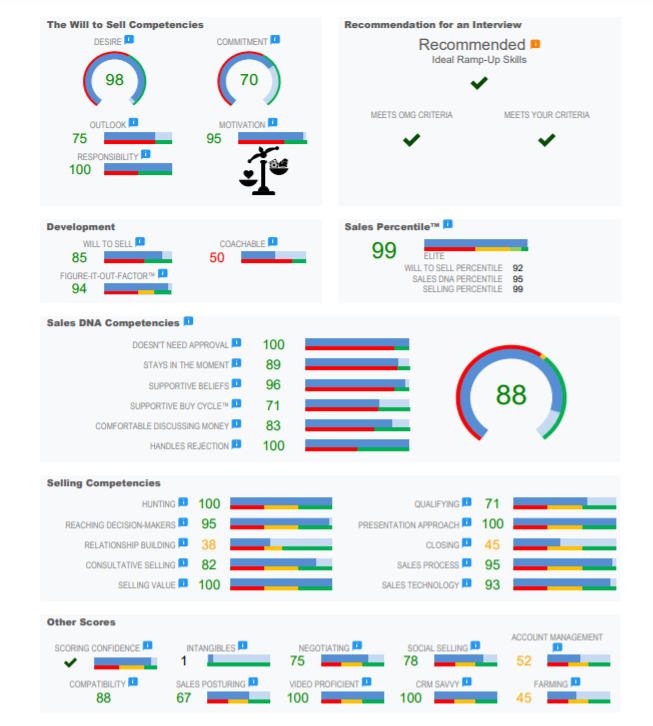Just as it’s important to keep customers in the loop, sales candidate communication is also integral to recruiting. But here’s the thing. 63% of sales candidates say recruiters don’t communicate adequately, and 53% report not receiving a response until three months after applying.
That’s a huge problem because a negative candidate experience can quickly sour what could be a valuable relationship and potentially hurt your brand reputation. Creating a positive experience through proper communication, on the other hand, makes candidates 38% more likely to accept an offer.
In this post, I’ll explain how to develop a winning sales candidate communication plan step-by-step so you can prevent elite salespeople from slipping through your fingers and strengthen your overall brand.
Step 1: Respond to Each Application
There’s a lot that can go awry in the application process, so sending each candidate a quick response confirming you’ve received their application is a critical first step. This doesn’t have to be anything over the top, just a brief, friendly message through email, text, or social media letting them know they’re officially part of the candidate pool.
That way they know for sure their application successfully went through, and they can instantly tell you’re a professional that values communication. If you’re wondering how to go about this, you can use candidate engagement software like Yello to automate application confirmations and send them out in large volumes.
This brings me to the next step.
Step 2: Explain How Your Hiring Process Works
Another reason for responding to each application is that it gives you the chance to get candidates up-to-speed with your hiring process and what to expect. This is an effective way to get candidates acclimated and should eliminate a lot of confusion. Here’s an example.
Here the recruiter lets the candidate know they’re reviewing their application and will contact them about the next steps if they’re deemed a good fit for the sales position. The recruiter also lets them know they may consider their application for other positions and that it could happen a few times in the recruitment process.
On top of that, they share helpful links, allowing the candidate to assess their profile, view application updates, and visit the company’s career center where they can find additional job opportunities.
Step 3: Communicate at Key Stages
Besides the initial response, there will be other specific intervals where you’ll want to communicate with candidates. These will vary from company to company, but here are some common stages:
- A week or two after receiving an application reassuring a candidate it’s being looked at
- Whenever the status of their application changes (For example, when a candidate passes the pre-screening process or is short-listed to move onto the next round of hiring)
- When they’ve been selected to be interviewed
- When they’ve officially received a job offer
- When you’ve decided they’re not the right fit and have chosen to move on without them
Regardless of what happens, this will ensure there’s an open line of communication and candidates aren’t left guessing what’s happened.
Step 4: Offer Convenient Outreach
Even when following the steps I’ve outlined so far, a portion of candidates will still have questions or concerns. When this happens, they should have a straightforward, convenient way to get in touch with your company. That’s why you should provide a point of contact in a few key locations throughout the recruiting process, such as:
- The job ad
- The initial response email
- Follow up emails
- Social media profiles
- Your website
Note that it’s also important to respond quickly, and there are two main strategies to ensure a fast response time. One is to assign dedicated team members to handle inquiries throughout the recruiting process. Ideally, they’ll have enough bandwidth to respond within a few hours so no one’s left hanging for an extended period.
Also, I suggest using a chatbot to answer basic FAQs and point candidates to helpful resources. This is nice because it provides an instant response 24/7 while also freeing up internal manpower. One particular platform I suggest checking out is Mya which features innovative conversational AI. You can learn all about it here.
Step 5: Seek Feedback
I’m a huge believer in incremental progress. Just like in any other area of business, a big part of improving is gathering data and using it to get better and better. So the last step in developing a sales candidate communication plan is getting feedback. This is a win-win because 1) it provides candidates with a channel for voicing their opinion which improves the candidate experience and 2) it lets you identify your strengths and weaknesses so you’ll know where adjustments should be made.
And at the moment, this is a drastically underutilized strategy given that 75% of recruiters never or rarely ask for feedback. But considering that 68% of candidates would offer feedback if asked, this is something I highly recommend putting to use.
The easiest way to go about it is to simply send out an email after you’ve wrapped up your recruiting, asking what candidates liked about it and where you could improve. You may also want to ask them to rate their overall experience so you have a quantifiable number to draw from. As you accumulate more data, trends will begin to emerge which can be a huge asset in the long run.
Acing Candidate Communication
Candidate communication is an incredibly important yet surprisingly ignored aspect of recruiting. Being a leader in this department can give you a huge competitive edge and seal the deal with more talented candidates. It’s just a matter of developing a fully fleshed-out sales candidate communication plan by following the five steps outlined above.
Looking to hire SaaS sales talent? Learn how HireDNA can help generate pre-screened interview-ready sales candidates to fill your talent pipeline.











